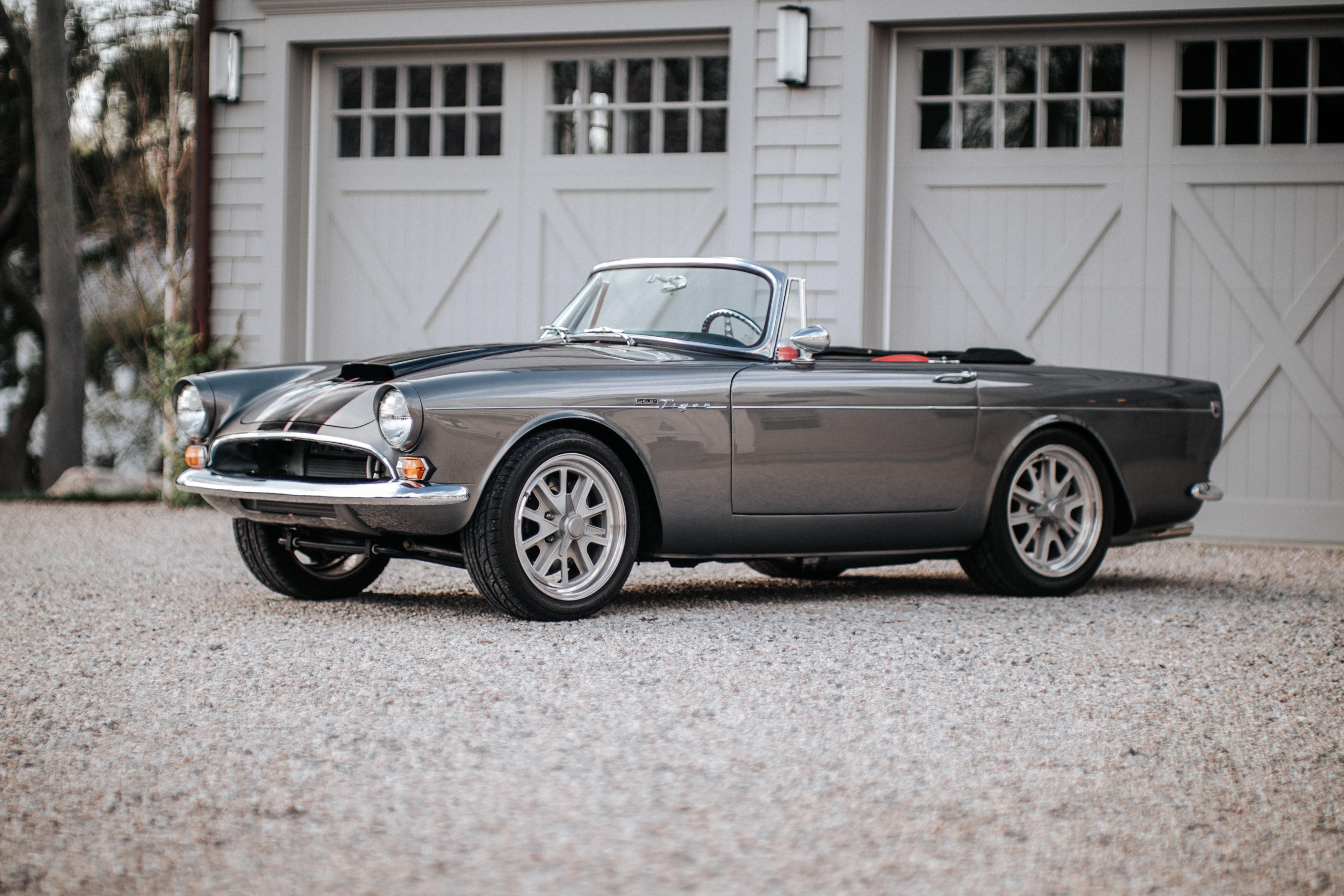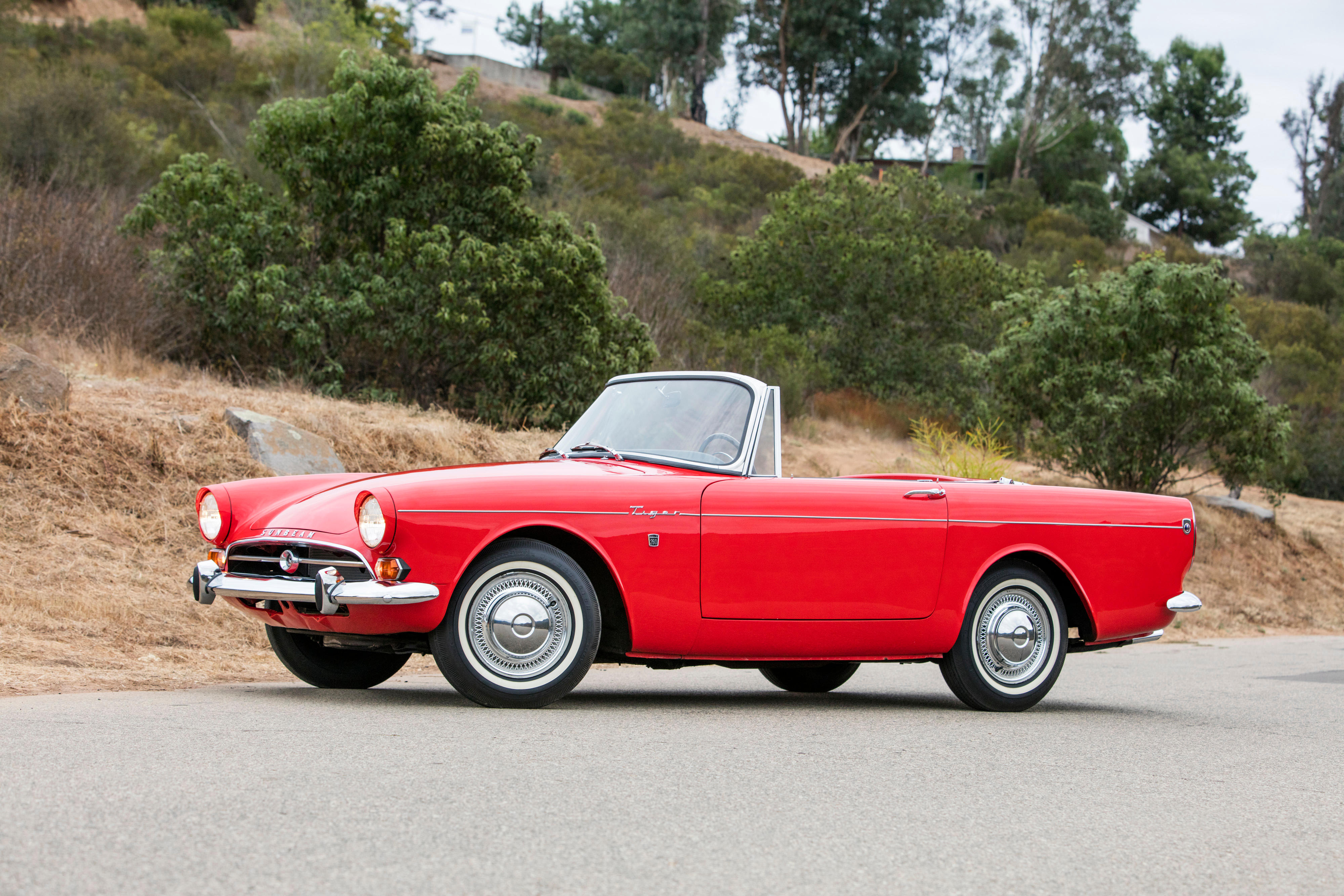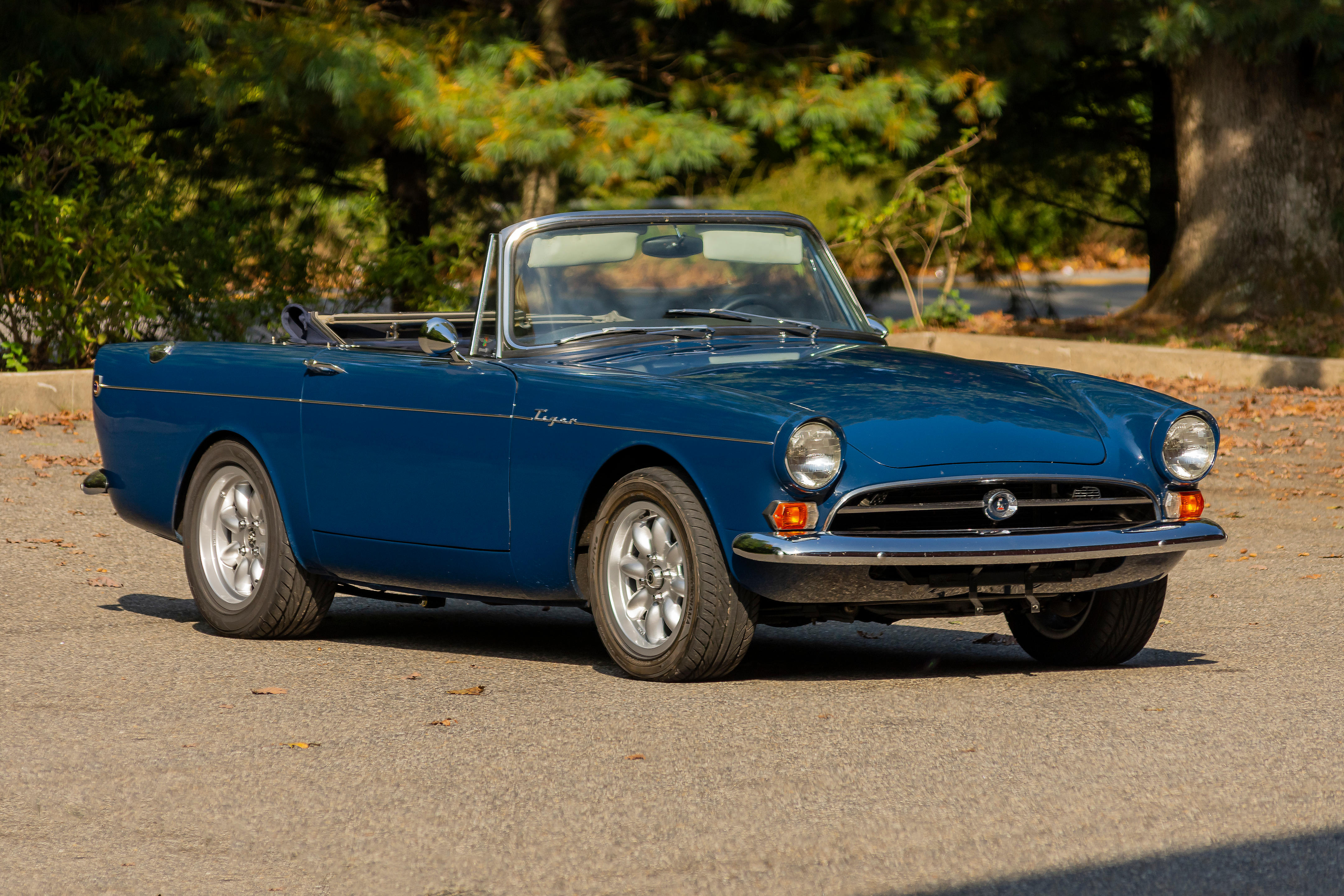1964 AC COBRA MK II 289 ROADSTER Registration No. JA 5 (to be confirmed - see text) Chassis No. COB 6009 Engine No. 2235 Blue with black interior - for restoration. Engine: V8 289cu.in. (4.7 litre), pushrod overhead valves, carburettor, single Holley, 260bhp at 5,600rpm; Gearbox: T10 synchromesh manual, close ratio four speeds; Suspension: fully independent front and rear by wishbones and transverse half elliptic leaf springs; Brakes: disc all round. Right hand drive. By the summer of 1961, AC Cars of Surrey had developed their hand-built and rather expensive Ace into one of the workd's best-handling sports two-seaters. Powered by the eager two-litre six cylinder Bristol powerplant, it had built an enviable racing record both in Europe and the USA. But now the Bristol engine was about to go out of production and AC were none too sure about their future direction. At about the same time Lee Iacocca, the newly appointed head of Ford's manufacturing division in the USA, moved his company into an aggressive high performance and competition programme, tapping the huge younger market the researchers assured him was waiting out there. At the heart of Ford's plans was an outstanding short-stroke lightweight 221 cu.in. (3.5 litre) V8 engine. It weighed about 470lb, only a little more than the Bristol, and in 1961, at the beginning of its development life, already gave around 145bhp. There was clearly enormous potential there. What Ford needed, and quickly, was a well-engineered chassis with which to go racing. Texan Carroll Shelby, retired air force pilot and well-respected racing driver with a victory at the Le Mans 24-hour race to his credit, had for some years been trying to put together a package to bring a European sports car chassis together with one of the new technically advanced powerplants out of Detroit. He persuaded Ford to part with a couple of their new V8 engines and talked AC Cars' owners into installing one in a suitably strengthened Ace. The end result was a sensational prototype, the first Cobra roadster, its elegant simplicity set off by pearlescent yellow cellulose and displayed on the Ford stand at the New York Motor show in the Spring of 1962. If the Cobra's shape was still very much that of its elder sister, underneath that shapely aluminium shell there was to be a frenzied programme of strengthening and development to match the very substantial power increases the engine was all too happy to provide. It was a brilliant concept. When the California-based Road and Track tested what was probably that same New York show car, they quoted 260bhp from the now 260cu.in. (4.2 litre) engine. Installed in a car weighing 18cwt the results were electric; 0-60mph in 4.2 secs, 0-100mph in 10.8 secs, maximum speed 153mph. Backed by Ford, managed by Shelby, the Cobra went racing in a big way. With an engine extended to 289 cu.in. (4.7 litre), deploying up to 400bhp it was a formidable endurance racer. Shelby's 289 Cobra roadsters, ably backed by the Daytona coupes derived from them, gave Ford a winning hand both in the European Grand Touring and the Sports Car Club of America championships. The AC Cobra's career as an international racing front runner was necessarily short, but there was a continuing demand for it as a very enjoyable roadgoing machine, offering a unique kind of 'wind-in-your-hair' exhilaration. To the skilled driver the earlier cars as represented by COB 6009, with their short-travel, all independent suspension controlled by transverse leaf springs, offer a most rewarding combination of power, handling and traction. Add to those qualities a shape that for thirty years has been a design icon and you have an enduring classic. This Cobra was purchased from the factory in the Summer of 1964 by John Anstis, who had enthusiastically competed in club events with his Ace-Bristol. Initially the Cobra too was campaigned, but then spent some twenty years in storage. In the late 1980s, having covered only 13,410 miles
1964 AC COBRA MK II 289 ROADSTER Registration No. JA 5 (to be confirmed - see text) Chassis No. COB 6009 Engine No. 2235 Blue with black interior - for restoration. Engine: V8 289cu.in. (4.7 litre), pushrod overhead valves, carburettor, single Holley, 260bhp at 5,600rpm; Gearbox: T10 synchromesh manual, close ratio four speeds; Suspension: fully independent front and rear by wishbones and transverse half elliptic leaf springs; Brakes: disc all round. Right hand drive. By the summer of 1961, AC Cars of Surrey had developed their hand-built and rather expensive Ace into one of the workd's best-handling sports two-seaters. Powered by the eager two-litre six cylinder Bristol powerplant, it had built an enviable racing record both in Europe and the USA. But now the Bristol engine was about to go out of production and AC were none too sure about their future direction. At about the same time Lee Iacocca, the newly appointed head of Ford's manufacturing division in the USA, moved his company into an aggressive high performance and competition programme, tapping the huge younger market the researchers assured him was waiting out there. At the heart of Ford's plans was an outstanding short-stroke lightweight 221 cu.in. (3.5 litre) V8 engine. It weighed about 470lb, only a little more than the Bristol, and in 1961, at the beginning of its development life, already gave around 145bhp. There was clearly enormous potential there. What Ford needed, and quickly, was a well-engineered chassis with which to go racing. Texan Carroll Shelby, retired air force pilot and well-respected racing driver with a victory at the Le Mans 24-hour race to his credit, had for some years been trying to put together a package to bring a European sports car chassis together with one of the new technically advanced powerplants out of Detroit. He persuaded Ford to part with a couple of their new V8 engines and talked AC Cars' owners into installing one in a suitably strengthened Ace. The end result was a sensational prototype, the first Cobra roadster, its elegant simplicity set off by pearlescent yellow cellulose and displayed on the Ford stand at the New York Motor show in the Spring of 1962. If the Cobra's shape was still very much that of its elder sister, underneath that shapely aluminium shell there was to be a frenzied programme of strengthening and development to match the very substantial power increases the engine was all too happy to provide. It was a brilliant concept. When the California-based Road and Track tested what was probably that same New York show car, they quoted 260bhp from the now 260cu.in. (4.2 litre) engine. Installed in a car weighing 18cwt the results were electric; 0-60mph in 4.2 secs, 0-100mph in 10.8 secs, maximum speed 153mph. Backed by Ford, managed by Shelby, the Cobra went racing in a big way. With an engine extended to 289 cu.in. (4.7 litre), deploying up to 400bhp it was a formidable endurance racer. Shelby's 289 Cobra roadsters, ably backed by the Daytona coupes derived from them, gave Ford a winning hand both in the European Grand Touring and the Sports Car Club of America championships. The AC Cobra's career as an international racing front runner was necessarily short, but there was a continuing demand for it as a very enjoyable roadgoing machine, offering a unique kind of 'wind-in-your-hair' exhilaration. To the skilled driver the earlier cars as represented by COB 6009, with their short-travel, all independent suspension controlled by transverse leaf springs, offer a most rewarding combination of power, handling and traction. Add to those qualities a shape that for thirty years has been a design icon and you have an enduring classic. This Cobra was purchased from the factory in the Summer of 1964 by John Anstis, who had enthusiastically competed in club events with his Ace-Bristol. Initially the Cobra too was campaigned, but then spent some twenty years in storage. In the late 1980s, having covered only 13,410 miles












Testen Sie LotSearch und seine Premium-Features 7 Tage - ohne Kosten!
Lassen Sie sich automatisch über neue Objekte in kommenden Auktionen benachrichtigen.
Suchauftrag anlegen